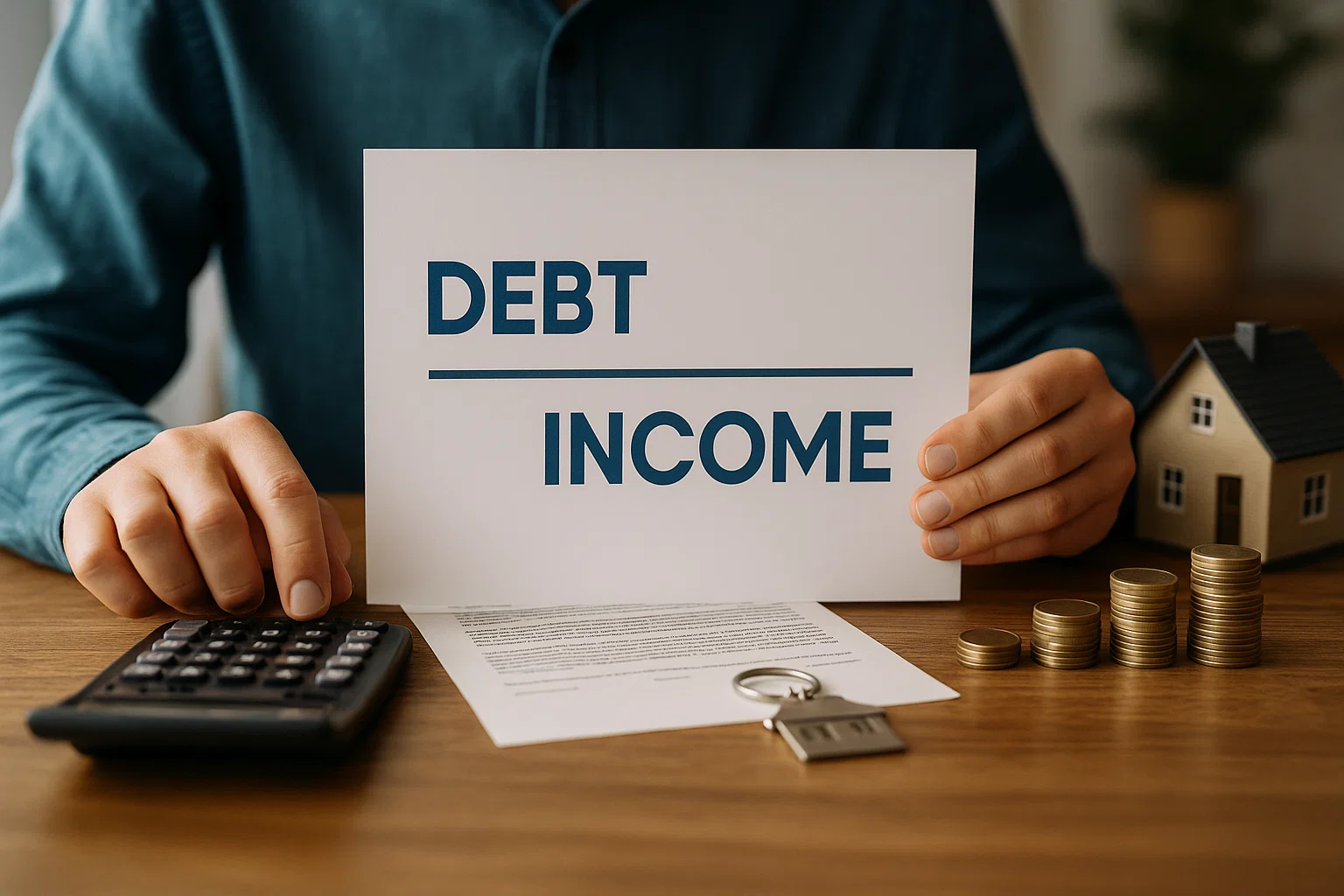Qualifying for a Home Equity Loan vs Refinancing: Which Door Will Lenders Actually Open for You?
November 19, 2025

You've spent the last two weeks researching whether a home equity loan or refinancing makes more financial sense for accessing your home's equity. You've run the numbers, compared interest rates, and calculated break-even points until your eyes glazed over. You're convinced you know which option saves you more money. There's just one problem: what if you can't actually qualify for the option you've decided is best?
This is the frustrating reality thousands of homeowners face every month. They make elaborate plans to refinance their first mortgage or take out a home equity loan, only to discover that lenders view their applications very differently than they expected. What looked perfect on paper gets rejected in reality, forcing them to either accept their second-choice option or abandon their plans entirely.
Understanding the qualification requirements for both a home equity loan and refinancing before you invest time and emotional energy in either path can save you from devastating disappointment and wasted effort. Let's examine exactly what lenders look for with each option, where the requirements differ dramatically, and how to position yourself to actually get approved for whichever strategy makes the most financial sense for your situation.
The Credit Score Reality: Different Bars for Different Options
One of the most significant differences between qualifying for a home equity loan versus refinancing involves the credit score requirements, and this distinction often determines which path is even available to you.
When you refinance your first mortgage, you're asking a lender to provide you with a brand new first lien position on your property. This senior position means they get paid first if something goes wrong, making it lower risk for the lender. Because of this reduced risk, first mortgage refinancing typically requires minimum credit scores of 620-640 for conventional loans, and sometimes even lower for government-backed programs like FHA refinancing (as low as 580 in some cases) or VA refinancing (no set minimum for streamline refinances).
A home equity loan functions as a second mortgage, sitting behind your existing first mortgage in terms of legal priority. If you defaulted and your home went to foreclosure, the first mortgage lender gets fully paid before your home equity loan lender receives anything. This subordinate position creates additional risk that lenders compensate for not just through higher interest rates, but also through stricter credit requirements. Most home equity loan lenders require minimum credit scores of 660-700, with the best rates reserved for borrowers with scores above 740.
This 40-80 point credit score difference can be the deciding factor for many homeowners. If your credit score sits at 635—perhaps damaged by some late payments during a rough financial period but steadily improving—you might easily qualify to refinance your first mortgage but get rejected for every home equity loan you apply for. Conversely, if your score is 720, you'll have access to both options and can choose based purely on financial merit rather than qualification limitations.
Understanding where your credit score actually falls before you start planning helps you focus on realistic options rather than building elaborate strategies around products you can't actually access. Check your scores from all three credit bureaus—Experian, Equifax, and TransUnion—because lenders often use the middle score of the three when evaluating applications, and variations of 20-50 points between bureaus aren't uncommon.
Debt-to-Income Ratios: How Much Debt Can You Handle?

Beyond credit scores, lenders scrutinize your debt-to-income (DTI) ratio when evaluating both home equity loan and refinancing applications. Your DTI measures your total monthly debt payments—including your proposed new housing payment, credit cards, auto loans, student loans, and other obligations—divided by your gross monthly income.
Most lenders set maximum DTI ratios of 43-50% for both home equity loans and refinancing, though some portfolio lenders occasionally stretch to 55% for exceptionally strong borrowers with substantial assets or equity. However, the practical application of these ratios differs meaningfully between the two options in ways that affect your approval likelihood.
When you apply to refinance your first mortgage, the lender calculates your DTI using your new proposed mortgage payment—which might be lower than your current payment if you're capturing rate improvements or extending terms. If you're currently paying $2,100 monthly on your existing mortgage and refinancing drops that to $1,850, your DTI calculation improves by $250 monthly, potentially bringing you into acceptable ratios even if you're borderline.
With a home equity loan, however, you're adding a completely new monthly obligation on top of your existing first mortgage payment. If that first mortgage costs $2,100 monthly and you're adding a home equity loan payment of $650, your housing debt jumps to $2,750—a $650 monthly DTI increase that might push you over acceptable limits even though your actual cash outflow situation hasn't changed (you presumably need that home equity loan to pay for something you'd otherwise finance differently).
This structural difference means that borrowers with already-elevated DTI ratios from other debts often find it easier to qualify for refinancing that replaces their current mortgage than for a home equity loan that adds to their debt load. If your current DTI sits at 38% and refinancing would keep it essentially the same (or even reduce it through lower payments), you're likely approved. But if that same 38% DTI would jump to 44% by adding a home equity loan payment, you might face rejection or need to pay down other debts first to create room for the additional monthly obligation.
The Home Equity Requirements: Different Stakes, Different Rules
Both home equity loans and refinancing require you to maintain equity in your property—lenders won't let you borrow 100% of your home's value (except through specialized programs like VA cash-out refinancing). However, the specific equity requirements differ between the two options in ways that affect accessibility.
When you refinance your first mortgage, most lenders require you to maintain at least 20% equity in your home after the refinance completes. So if your home is worth $400,000, the maximum you could refinance to would be approximately $320,000 (80% loan-to-value ratio). Some lenders stretch to 85% or even 90% LTV for refinancing with strong credit and stable income, though rates increase at these higher LTV levels.
Home equity loans typically allow you to borrow up to 80-85% combined loan-to-value (CLTV)—meaning your first mortgage balance plus your home equity loan balance together can't exceed 80-85% of your property value. The practical effect is that home equity loans let you access slightly more of your equity than refinancing in many cases, since you're keeping your existing first mortgage in place and layering the home equity loan on top.
Here's where it gets interesting: if you've experienced significant property appreciation, you might discover you can access more equity through a home equity loan than through refinancing, even though refinancing allows higher individual LTV ratios. Suppose your home has appreciated from $300,000 when you bought it to $450,000 today, and you owe $200,000 on your first mortgage. A home equity loan at 85% CLTV would let you borrow up to $182,500 (85% of $450,000 = $382,500 minus your $200,000 first mortgage). If you tried to access that same amount through cash-out refinancing, your new mortgage would be $382,500—exactly at the 85% threshold and likely requiring higher rates due to the elevated LTV.
However, if your home's value has remained flat or declined since purchase, you might not have sufficient equity for either option. This situation traps homeowners who need cash but lack the equity to access it, regardless of whether they pursue a home equity loan or refinancing.
Income Documentation: Where Self-Employed Borrowers Hit Walls
The income documentation requirements for both home equity loans and refinancing follow similar patterns, but the intensity of scrutiny and the specific requirements can differ in ways that affect approval timelines and success rates, particularly for self-employed borrowers or those with non-traditional income sources.
When you apply to refinance your first mortgage, you're putting the lender's money at primary risk. They're betting their entire loan amount on your ability to repay. This creates motivation for thorough income verification including pay stubs, W-2s, tax returns, and verification of employment directly with your employer. For self-employed borrowers, expect to provide two years of personal tax returns, two years of business tax returns, year-to-date profit and loss statements, and business bank statements. The lender will average your income over two years after deducting all business expenses, often resulting in qualified income substantially below what you actually "make" in any practical sense.
Home equity loan lenders perform similar due diligence, though some (particularly credit unions and portfolio lenders) occasionally offer streamlined documentation for existing customers with excellent payment histories on their first mortgage. If you've been paying your primary mortgage perfectly for five years and your income hasn't changed dramatically, some home equity loan lenders will approve you based on updated pay stubs and credit reports without demanding full tax return documentation. This abbreviated process can shave weeks off approval timelines and reduce the documentation burden, particularly for self-employed borrowers whose tax returns might not paint the most flattering income picture due to legitimate business deductions.
However, this streamlined approach isn't universal—most major home equity loan lenders apply documentation requirements identical to first mortgage refinancing, making the process equally intensive regardless of which option you pursue.
When You Already Have a Second Mortgage: The Subordination Factor
If you currently have both a first mortgage and an existing second mortgage from a previous home equity loan, and you're now considering refinancing just your first mortgage while keeping that second mortgage in place, you face a unique qualification hurdle that doesn't exist with standard refinancing: subordination approval.
Your existing home equity loan lender must agree to maintain their second position behind your new first mortgage rather than potentially claiming first position when your old first mortgage gets paid off. This isn't a formality—it's a deliberate decision your home equity loan lender makes after evaluating whether you still meet their risk criteria.
To approve subordination, your home equity loan lender will review your payment history on both mortgages, verify your property hasn't declined in value below their acceptable CLTV ratios, confirm you're not behind on property taxes or insurance, and sometimes even pull updated credit reports to ensure your financial profile hasn't deteriorated. If any of these factors look problematic, they can refuse subordination—effectively blocking your first mortgage refinancing plans even though you qualified for the new loan itself.
This subordination requirement can create situations where the "obvious" strategy—refinancing your first mortgage to better rates while keeping your existing home equity loan—becomes impossible not because you can't qualify for the refinance, but because your home equity loan lender won't cooperate. In these cases, refinancing both your first mortgage and second mortgage together into one consolidated loan becomes your only viable path, even if the math doesn't favor consolidation as clearly as selective first mortgage refinancing would have.
The Appraisal Hurdle: When Your Property Disappoints

Both home equity loans and refinancing require professional appraisals to confirm your property's current value supports the loan amounts you're requesting. However, the stakes and contingency plans differ meaningfully between the two options.
When you apply to refinance your first mortgage through rate-and-term refinancing (not taking cash out), you're not increasing your loan balance—you're simply replacing one mortgage with another of equal size. If the appraisal comes in lower than expected, it might not matter at all. Your existing loan-to-value ratio remains acceptable even with the disappointing appraisal, and your refinancing proceeds as planned. You might not be able to extract as much cash as hoped if you were planning cash-out refinancing, but rate improvement refinancing typically survives low appraisals.
With a home equity loan, however, a low appraisal can be devastating. Your entire home equity loan is predicated on having sufficient equity to borrow against. If you need $75,000 and the appraisal comes in $40,000 lower than expected, you might discover you only qualify for $45,000—forcing you to either scale back your plans dramatically, find alternative funding sources for the shortfall, or abandon the home equity loan entirely.
This appraisal risk is particularly acute in rapidly appreciating markets where homeowners' estimates of their property values often run 10-20% ahead of what conservative appraisers actually assign. You might be confident your home is worth $500,000 based on nearby sales, but if the appraiser assigns it $450,000 due to condition differences or market volatility concerns, your $100,000 home equity loan plan might suddenly become a $65,000 approval—creating a $35,000 funding gap you didn't anticipate.
Improving Your Qualification Odds: Strategic Moves Before Applying
Whether you pursue a home equity loan or refinancing, several strategic moves before applying can dramatically improve your approval odds and terms:
Pay down credit card balances below 30% of your available limits—ideally below 10%—at least two months before applying. Credit utilization represents 30% of your credit score, and lenders view high utilization as risk signals regardless of your payment history.
Avoid applying for new credit, making large purchases, or changing jobs during the 6-12 months before applying. Each of these activities either damages your credit score, increases your debt-to-income ratio, or creates income verification complications that can delay or derail approvals.
If you're self-employed, work with your accountant to ensure your most recent tax returns present your income as favorably as possible while remaining completely accurate. Legitimate strategies like timing equipment purchases, deferring discretionary expenses, or adjusting retirement contributions can meaningfully affect your qualifying income without any fraudulent manipulation.
Save substantial reserves beyond what you need for down payments or closing costs. Lenders view borrowers with 6-12 months of housing payments in liquid reserves as far lower risk than those scraping together just enough to close, potentially resulting in better rates or approval where marginal cases might otherwise get declined.
Making the Right Choice Based on What's Actually Possible
The financially optimal choice between a home equity loan and refinancing means nothing if you can't actually qualify for it. Before investing hours calculating break-even points and comparing rates, invest the time understanding where you stand on credit scores, debt-to-income ratios, home equity levels, and documentation capabilities.
If your credit score sits below 660, focus on refinancing your first mortgage rather than pursuing home equity loans you'll likely get rejected for. If your debt-to-income ratio is already elevated, recognize that adding a home equity loan payment might push you over acceptable limits while refinancing that replaces your current payment might stay within bounds. If you have an existing second mortgage and want to refinance your first mortgage, verify subordination is possible before you waste time applying.
By understanding the qualification landscape before you commit to either strategy, you ensure the path you choose is one lenders will actually approve rather than one that looks perfect on paper but fails in reality. Sometimes the "second best" option that you can actually qualify for delivers far better results than the "optimal" option that remains forever out of reach due to qualification barriers you didn't anticipate.
Take time to honestly assess where you stand on every qualification dimension, and if needed, spend 6-12 months improving your profile before applying rather than rushing into applications that fail and damage your credit through inquiries while delivering nothing but frustration and disappointment.

Alex Chen

Alex Chen













Get in touch with a loan officer
Our dedicated loan officers are here to guide you through every step of the home buying process, ensuring you find the perfect mortgage solution tailored to your needs.
Options
Exercising Options
Selling
Quarterly estimates
Loans
New home

Manténgase siempre actualizado sobre artículos y guías interesantes.
Todos los lunes, recibirás un artículo o una guía que te ayudará a estar más presente, concentrado y productivo en tu vida laboral y personal.




.png)
.png)
.png)
.png)
.png)
.png)
.png)
.png)
.png)
.png)
.png)
.png)
.png)
.png)
.png)
.png)
.png)
.png)
.png)
.png)
.png)
.png)